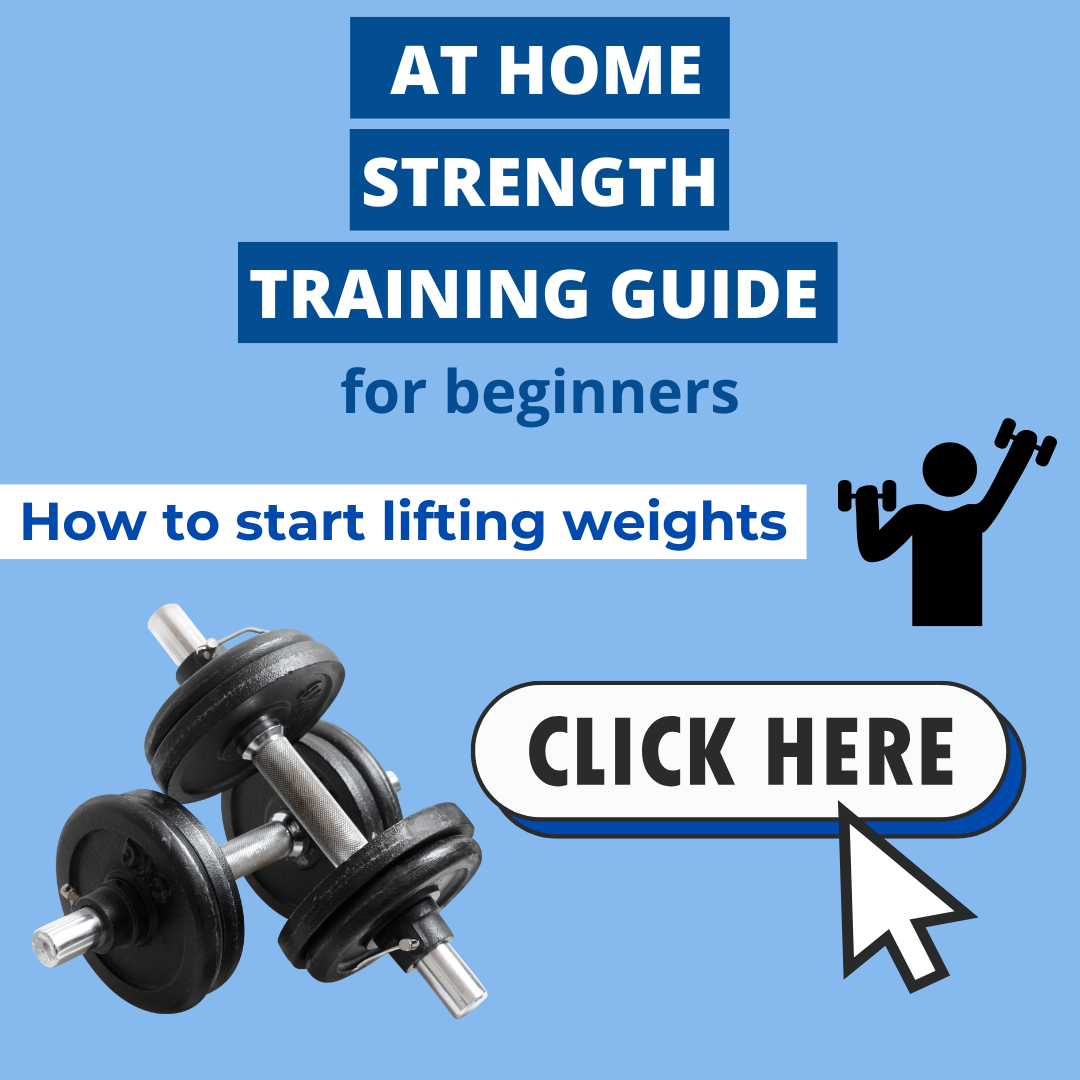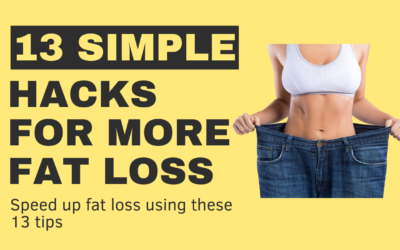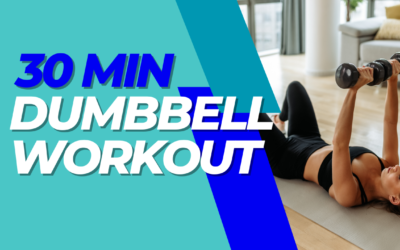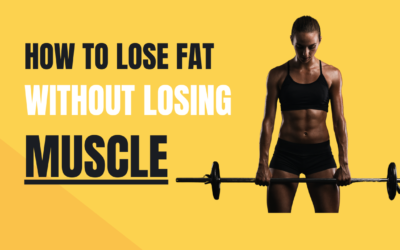How to Lose 20 Pounds and Keep It Off for Life

Have you tried everything you can possibly think of to lose 20 pounds but nothing seems to work long-term?
You feel like you’re stuck in weight loss purgatory…
You’re straddling the line between dropping a few pounds but always, without fail, gaining the weight you lost back.
Don’t worry, that changes for you TODAY.
And by today, I mean as soon as you get done reading this article.
We’re going to be walking through EXACTLY what you need to do in order to lose 20 pounds and actually keep it off for good this time.
Specifically, we’ll be talking about:
- What most people get wrong about weight loss
- The number one rule to follow you so can lose weight, GUARANTEED
- How many calories to eat and what your diet should look like
- What to do exercise-wise
- And a whole lot more
What do most people get wrong about weight loss?
You won’t belong in the “most people” category at the end of this but since you’re reading this article about how to lose 20 pounds, I’ll assume it’s where you are as we sit here today.
So I’m going to be speaking directly to you when I say this…
Weight loss isn’t something you can achieve overnight but that’s the unrealistic image or expectation you have in your mind.
You approach weight loss like it should’ve happened yesterday.
After a few days of your weight not going down, you freak out and feel like you’re doing something wrong.
You crash diet, try squeezing 6 HIIT workouts in 7 days, unnecessarily give up carbs,
You cut all your favorites out of your diet like you’re going cold turkey on a flaky ex-partner.
And for what?
You assume going to the extreme like that will help you lose weight fast.
But when that’s your mentality–when you’re so focused on doing things as quickly as possible–sustainability (which is the key to long-term weight loss) becomes an afterthought.
Know this…
If the methods you’re using to lose weight aren’t sustainable, any results you achieve won’t be either.
Do you want the quickest way to lose 20 pounds?
Or the most sustainable one?
Would you be good with losing 20 pounds but gaining it all back eventually?
Or do you want to lose 20 pounds and actually be able to maintain it?
As we dive into the details about how to lose 20 pounds (and actually keep it off), ask yourself:
How can I approach this so that I can sustain my weight loss results?
How to lose 20 pounds: The #1 rule
2 + 2 will always = 4.
And you’ll always lose weight if you follow this one rule.
You must be in a calorie deficit in order to lose weight.
Being in a calorie deficit means consuming fewer calories than you burn (calories in are less than calories out).
^^^ And that right there, my friend, is your weight loss golden ticket.
So memorize it if you have to.
“In order to lose weight, I must be in a calorie deficit.”
It’s an irrefutable, scientific FACT you will lose weight as long as you’re in a calorie deficit.
Now, you might say…
“But Chad, I’ve been in a calorie deficit for months now and I’m still not losing weight.”
No, your metabolism isn’t broken so that “reset” will just be a complete waste of your hard-earned money.
If you’ve been in a calorie deficit for a while now and you’re not seeing any weight loss it can only mean one thing…
You’re not actually in a calorie deficit.
There’s a difference between thinking you’re in one and actually being in one.
Something’s off and there are a multitude of reasons as to why you’re not actually in a calorie deficit.
If you were truly in a calorie deficit, your scale weight would be decreasing and/or your measurements would be getting smaller.
How do you realistically lose weight and keep it off?
Dieting to lose 20 pounds–what does that look like?
Well, exercise is NOT the main driver of weight loss.
Nutrition is, so that’s where we’ll start.
How much should you eat to lose 20 pounds?
The first step to losing 20 pounds is figuring out the number of calories you should be eating for weight loss.
You can use this post for a more detailed breakdown of how to calculate your weight loss calories but essentially, here’s what you need to do:
- Use a calorie calculator to get your maintenance calories (the number of calories you would need to eat to maintain your current weight).
- Then, just take 80% of that number to get your weight loss calories.
For example, let’s say your maintenance calories are 2,300.
Your deficit (or weight loss) calories would be 1,840.
Next, you need a way to ensure you’re actually eating that number of calories so you can lose weight.
That’s where counting calories comes into play.
Before you start protesting about how much you don’t want to count calories, hear me out.
Can you lose weight without counting calories?
Yes…
Because remember, losing weight just comes down to being in a calorie deficit.
Your body doesn’t say, “Oh, you don’t want to count calories? No weight loss for you.”
But just because it’s possible doesn’t mean it’s in your best interest.
Let’s say your goal is to save money for a downpayment on a house.
You’d create a budget, and keep track of every single penny coming in and every single penny going out.
You wouldn’t leave things up to chance and just hope you save the money you need.
Apply that same concept to counting calories.
Instead of keeping track of your finances to save money, you’re keeping track of your nutrition to ensure weight loss.
What type of foods should you eat to lose 20 pounds?
Have you been operating under the assumption certain foods are either “bad” or “good” and strictly” healthy” eating is the only way to lose weight?
I’m here to tell you things 110% do NOT have to be this way.
Isn’t it good news to hear that?
Because you’re just so tired of the same old cycle repeating itself:
- Eat super “clean” by cutting out your favorite foods
- Lose a little bit of weight
- Feel restricted so you binge and overeat, and gain it all back
- Foods don’t have a moral value.
If you want to cultivate a weight loss mindset, stop labeling foods as either “bad” or “good.”
- The only thing you should “avoid” is depriving yourself of all the foods you love.
Any food, I don’t care what it is, can be had within your diet.
Obviously, you can’t just eat pizza, wings, burgers, fries, and cookies ALL THE TIME
But you most definitely can have foods like that in moderation, and that’s the key phrase.
“In moderation.”
If you want to lose 20 pounds and keep it off long-term, start eating with more balance.
It’ll make your diet more sustainable.
And remember, sustainability is what we’re going for to lose 20 pounds.
Food-wise, there are two types you’ll definitely want to prioritize:
- Protein: Don’t skip out on your protein! High-protein sources like chicken breast, turkey breast, egg whites, shrimp, and tuna keep you feeling fuller for longer, speed up your metabolism, and are key to building/preserving muscle mass (muscle = a higher metabolism and more weight loss).
- Fiber: Not only are foods high in fiber like beans, whole grains, berries, avocado, and chia seeds super filling but they’re tremendous for your overall health. For example, for every 7 grams of fiber you eat, you reduce your risk of heart disease by 9%.
Use this weight loss grocery list I created on your next trip to the store to make sure you’re eating with balance and staying on track with your fitness goals.
What about intermittent fasting? Will that help?
Here’s the deal on intermittent fasting…
There’s nothing magical about it that will just automatically lead to greater weight loss.
If you like eating breakfast in the morning, intermittent fasting probably isn’t for you.
If you have a tendency to skip breakfast, you may want to consider giving intermittent fasting a try.
Just know that, all things being equal, you’ll lose the same amount of weight whether you intermittent fast or not as long as you’re in a calorie deficit.
How should you workout if you want to lose 20 pounds?
We’re going to break this up into two parts: cardio and strength training.
Both deserve a spot in your workout routine but let’s talk about strength training first.
Strength training workouts
Let’s say point A is your current physique and point B is the physique you’re after–one that’s:
- Leaner
- Fitter-looking
- More defined/toned
- Actually has some muscle and shape
How do you get from A to B?
Strength training is that bridge and the truth is there just is not a substitute for it.
If you want a physique with all the attributes I just lifted off, start lifting weights.
For starters, strength training is not:
- Some random “fat-burning” HIIT workout you bookmarked from social media
- Orange Theory
- Boot camp-style exercise group classes
You’re also not strength training when you hop on the StairMaster and perform an endless amount of banded glute kickbacks until you “feel the burn.”
Instead, if you want to build your glutes, HERE’S HOW.
Strength training is having a structured weightlifting plan where you’ll do the same batch of workouts for roughly 8-12 weeks at a time (meaning you’re not switching up your workouts every single day or week).
Your focus should be on getting stronger over time by progressively lifting heavier and heavier weights (That’s how you maximize results).
To the ladies out there who might be a little apprehensive about strength training…
No, lifting weights won’t make you bulky or look like a man.
But as I’ve said, it’s a necessity if you want to avoid the skinny fat physique people get by focusing on cardio alone.
How much weight should you be lifting during your workouts?
The amount of weight you should be lifting will depend on the type of exercise and how many reps you’re doing.
But regardless, those last 1-2 reps shouldn’t feel like a walk in the park on a sunny afternoon with a light breeze (aka easy AF).
If your workout face wouldn’t make you feel a little awkward if your gym crush just happened to walk by, you need to push a little harder.
The more you challenge yourself with your lifts, the more stress you place on your body, but it’s a good kind of stress.
That stress is the stimulus your body needs to build muscle, which will lead to more fat loss.
How long should your workouts be?
You don’t need to be in the gym for hours on end.
As a general rule, 30-90 minutes is ideal but where you fall within that range depends.
I wrote an entire post detailing how long your workouts should last so make sure you check that out.
Which type of cardio is best?
If you want to lose 20 pounds, what I’m about to tell you to do from a cardio perspective might surprise you…
Walk more.
It might sound too simple to be true but it’s not.
You’re probably sitting there like, “There’s no way walking is the best cardio for fat loss, shouldn’t I be doing HIIT or something like that to burn more calories?”
There are many reasons why I wouldn’t focus so much on HIIT and the number of calories it burns (which I talk about in this post).
But just know your cardio doesn’t have to be this super strenuous activity.
And yes, walking definitely counts as cardio.
When you get up and move more it increases your NEAT (non-exercise activity thermogenesis), which is all the non-workout movement you get throughout the day.
Things like grocery shopping, taking the stairs instead of the elevator at work, parking further away so you can get more steps in, and doing yard work all fall under NEAT.
And the cool thing about NEAT is it actually burns three times as many calories as your actual workouts.
You read that right.
Your daily movement burns 300% more calories than the time you dedicate to exercise.
Not only that but walking also promotes recovery, eases stress, is good for digestion, and overall, is just crazy beneficial for your health.
Can you guess the one thing the healthiest people in the world who live the longest all have in common?
They get plenty of movement throughout the day.
The weight loss tool you’re probably not taking advantage of to lose 20 pounds
Sleep doesn’t get the credit it deserves when it comes to weight loss.
Here’s what happens when you don’t get enough:
Your body produces more cortisol, which is a stress hormone that makes you hungrier.
And that can lead to overeating.
On the flipside…
More sleep = less stress and less hunger.
And that means you’ll be better equipped to stick with your diet.
You’ll also have more energy to crush your workouts in the gym, which means improved performance and more progress.
This is probably going to mean you sacrificing watching reruns of The Office for the 19 millionth time (really though, is there even a better show?) or mindlessly scrolling through social media while in bed.
But shutting things down an hour or two earlier to get more sleep is 110% worth it, I promise.
I know this might be a struggle for you parents out there (especially new ones) but as much as you can, just try your best to ink out at least a little more sleep.
It doesn’t have to be much but if you can manage to squeeze in just 30 minutes or an hour more than what you’re currently getting, it can make a huge difference.
How long does it take to lose 20 pounds and keep it off?
Thinking you’ll achieve an out of this world body transformation in a short amount of time is setting yourself up to fail before you even begin.
You won’t be able to lose 20 pounds in a week, in a month, or whatever short time frame you may have searched for in Google.
So the reality is there’s a 99.9% chance it’ll take longer than you want it to.
I don’t tell you that to be mean, harsh, or discourage you.
I say that because it’s the truth and I want you to have realistic expectations.
Assuming you’re being consistent with your diet and workouts, then 0.5-2 lbs per week of weight loss per week is about what you can expect.
But don’t tie yourself down to that number.
It’s definitely not a hard-set rule.
Everyone’s different and there are many ways to measure your progress, which leads us into the following question…
How can you measure your progress to lose 20 pounds?
A few points here…
Number one, you shouldn’t be looking at the scale as a be-all-end-all in terms of progress.
The scale is finicky.
Even if you’re doing everything right, your weight won’t go down every single time you step onto the scale.
Or in other words, weight loss isn’t linear.
I’m not saying the scale is useless.
In fact, I’d recommend you weigh yourself every single day (I explain why in this post).
But just be aware of the fact that your scale weight won’t always paint a perfect picture of the progress you’re truly making.
That brings me to point number two.
Since you can’t always rely on the scale, you’ll want to have some other methods that let you know you’re in a calorie deficit and actually making progress.
One of those methods is taking measurements every two weeks.
You’re making progress (and don’t need to change a thing) if:
- You’re losing weight
And/or…
- Your measurements are decreasing (inch loss = fat loss, which is the ultimate goal).
Also…
Are your clothes fitting better or have you had to tighten a few more notches in your belt?
Do you see improvements when you look in the mirror or through progress pictures?
Those are also signs you’re making progress.
And even beyond that, do you have more energy?
Are you feeling stronger? More confident?
Those are wins too, even though they’re not necessarily directly tied to weight loss.

What's up?
I’m Chad, I’m happy you’re here! I’m a certified personal trainer and my goal is to help you form practical, sustainable habits that lead to lifelong fitness results. If you want to lose fat, build muscle, and live a healthier, happier life then you’re right where you need to be. 💪🏾
Free resources
⬇⬇⬇







0 Comments